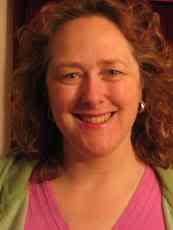Teaching for Understanding with Technology, Chapters 1 and 2
Teaching for Understanding with Technology
Chapters 1 and 2
Teaching for understanding is not a new concept. It can probably be first traced back to the Russian’s launching of Sputnik. Sputnik brought about an awakening in scholarly circles, fueled by fear, that shook the foundations of the educational establishment. “New” approaches were welcomed. A similar wave of reform has since been instituted which seeks to embrace new technologies into the curriculum. Wiske, in her book, Teaching for Understanding with Technology, attempts to do that. She offers a framework to be considered which appears to piggyback Jerome Bruner’s educational theory and Wiggins and McTighe’s Understanding by Design.
Wiske introduces a Teaching for Understanding framework. This framework is divided into five key topics designed to evaluate the usefulness of a specific technology or a panoply of technology tools. The steps to consider are:
• What are the generative topics?
• What are the understanding goals?
• What are the performances of understanding?
• How do we produce ongoing assessment?
• How do we form reflective, collaborative communities?
Generative topics
“Ideally interest in the material to be learned is the best stimulus to learning, rather than such external goals as grades or later competitive advantage… it is nonetheless worth considering how interest in learning per se can be stimulated.” (Bruner, 1978) These are usually a cross-curricular, real-life topic that the teacher is intrigued by. The idea here is that enthusiasm is contagious and for the students to become engaged, the teacher needs to be engaged first.
Understanding Goals
These “focus on key concepts and disciplined ways of thinking, not just on the isolated facts and formulas that form the core of many traditional teaching materials” (Wiske, 2005). Wiggins and McTighe define “understanding” as meaning “that a student has something more thant just textbook knowledge and skill—that a student really ‘gets it’” (Wiggins and McTighe, 1998).
Performances of Understanding
These are best described by Jerome Bruner in his famous book, The Process of Education: “(T)he schoolboy learning physics is a physicist, and it is easier for him to learn physics behaving like a physicist than doing something else” (Bruner, 1978) New software tools allow the student-physicist to immerse himself/herself into the role and to illustrate his/her knowledge through “performance.”
Ongoing Assessment
Best described in Understanding by Design by Wiggins and McTighe who write that “the assessment of understanding should be thought of in terms of a collection of evidence over time instead of an event—-a single moment-in-time test at the end of instruction—-as so often happens in current practice (Wiggins and McTighe, 1998). Creating e-portfolios, posting to websites, querying experts or fellow students are all new ways of assessing only recently made possible through the advent of technology.
Reflective, Collaborative Communities
In Computers as mindtools for schools, Jonassen cites a study by Harasim, author of Online education: An environment for collaboration and intellectual amplification, which found that “learners perceive themselves as reflecting more on their thoughts while computer conferencing than when engaged in face-to-face or telephone conversation” (Jonassen, 2000). No doubt the interaction that the Worldwide Web affords learners is very engaging. In addidtion, the solitary moments spent formulating one’s thoughts before transmitting them through Cyberspace are moments of self-reflection intertwined with moments of collaboration.
Sources
Bruner, J. (1978). The Process of education. Cambridge, MA: Harvard University Press.
Jonassen, David (2000). Computers as mindtools for schools. Upper Saddle River, N.J.: Merrill.
Wiggins, G., & McTighe, J. (1998). Understanding by design. Alexandria, VA: Association for Supervision and Curriculum Development.
Wiske, M., Rennebohm-Franz, K., & Breit, L. (2005). Teaching for understanding with technology. San Francisco, CA: Joseey-Bass.


2 Comments:
You have provided us with a good reflection on our readings and the relationship between Understanding by Design and Jerome Bruner. You have done a terrific job making these connections and then sharing them with us. I am also happy that you mention David Jonassen and his book Computers as Mindtools.
From your ideas of creating a meaningful lesson to assessments overtime you have covered each of the main points of our readings and provided us (the reader) with a draw to go back and reread our chapters to ensure that we have gleaned all that we can from them. Nicely done.
Bridgette, I liked the additional research you did for this section. It provides more information than the required text. After Sputnik, JFK pushed for more math and science in school. Hopefully there will continue to be change bringing more "new" technologies into schools.
Post a Comment
<< Home